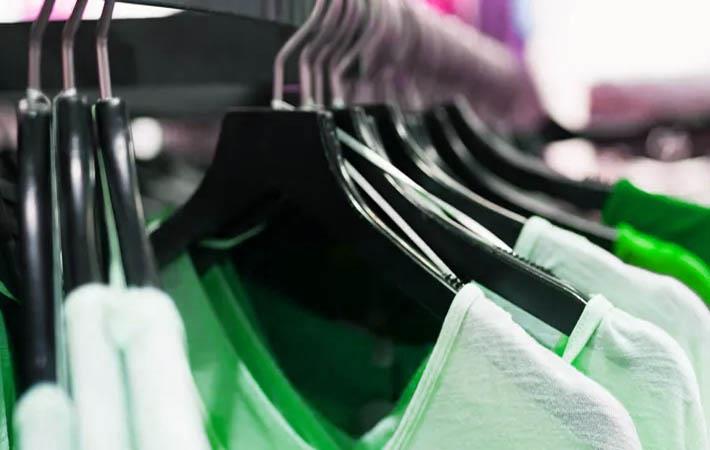Interviews
India's apparel industry grew at 13.8% CAGR in 9 years
26 Apr '19
3 min read

India’s apparel industry grew at a compound annual growth rate of 13.8 per cent from ₹1,924 billion in fiscal 2009-10 to ₹5,408 billion in 2017-18, says a report by CARE Ratings. CARE expects short-term economic uncertainties to be volatile and growth to revive only after the elections as the new government would be in a better position to take decisions.
With the industry now stabilizing post the demonetization and the implementation of the goods and service tax (GST) regime, the demand from both domestic and international markets, has picked up in the last few months, says the report.
Further, demand drivers like growing private final consumption expenditure, growing population and changing fashion trends still make a compelling case for the healthy economic scenario in the future, subject to policy implementation and good governance by the government.
The new government can take policy stands that would attract higher investment and fuel the rise in income levels and consequential consumption levels, a press release from CARE said citing the report.
CARE expects the domestic apparel market to grow by 10-12 per cent driven by the growth in the Indian economy leading to the rise in disposable income and increased usage of plastic money. This is expected drive the market size of the Indian apparel industry.
CARE estimates Indian apparel exports to remain subdued, growing marginally in rupee terms, and declining in US dollar terms. Earlier, the export market grew at a CAGR of 9.8 per cent from ₹508 billion in fiscal 2009-10 to the 2017-18 figure of ₹1,076 billion, which was lower compared to the figure in 2016-17.
India continues to experience headwinds in the form of intense competitive pressures from nations having a cost advantage over India, which seem to be constraining the overall momentum of the apparel export sector of India, said the report.
Notwithstanding a depreciation in the rupee vis-a-vis the US dollar (which could increase rupee realizations), apparel exports would increase marginally in rupee terms and decline by 4-5 per cent in US dollar terms in 2018-19 and increase marginally in 2019-20.
Furthermore, given the fact that cotton and synthetic apparel exports comprise over 75 per cent of apparel exports from India, CARE expects cotton (a crop where India is quite cost competitive) and synthetic apparels to continue to drive the growth in apparel exports.
Additionally given the issues in the neighbouring countries coupled with abundant raw material availability, a well-integrated textile industry and good designing skills, if leveraged appropriately, could help India consolidate and grow its position in the global apparel market.
India needs to diversify its fibre base, currently dominated by cotton in line with the global apparel consumption, which is well diversified within the cotton and man-made fibre (MMF)-based apparel. To remain competitive and grow, India needs to increase its production of MMF-based apparel. (DS)
With the industry now stabilizing post the demonetization and the implementation of the goods and service tax (GST) regime, the demand from both domestic and international markets, has picked up in the last few months, says the report.
Further, demand drivers like growing private final consumption expenditure, growing population and changing fashion trends still make a compelling case for the healthy economic scenario in the future, subject to policy implementation and good governance by the government.
The new government can take policy stands that would attract higher investment and fuel the rise in income levels and consequential consumption levels, a press release from CARE said citing the report.
CARE expects the domestic apparel market to grow by 10-12 per cent driven by the growth in the Indian economy leading to the rise in disposable income and increased usage of plastic money. This is expected drive the market size of the Indian apparel industry.
CARE estimates Indian apparel exports to remain subdued, growing marginally in rupee terms, and declining in US dollar terms. Earlier, the export market grew at a CAGR of 9.8 per cent from ₹508 billion in fiscal 2009-10 to the 2017-18 figure of ₹1,076 billion, which was lower compared to the figure in 2016-17.
India continues to experience headwinds in the form of intense competitive pressures from nations having a cost advantage over India, which seem to be constraining the overall momentum of the apparel export sector of India, said the report.
Notwithstanding a depreciation in the rupee vis-a-vis the US dollar (which could increase rupee realizations), apparel exports would increase marginally in rupee terms and decline by 4-5 per cent in US dollar terms in 2018-19 and increase marginally in 2019-20.
Furthermore, given the fact that cotton and synthetic apparel exports comprise over 75 per cent of apparel exports from India, CARE expects cotton (a crop where India is quite cost competitive) and synthetic apparels to continue to drive the growth in apparel exports.
Additionally given the issues in the neighbouring countries coupled with abundant raw material availability, a well-integrated textile industry and good designing skills, if leveraged appropriately, could help India consolidate and grow its position in the global apparel market.
India needs to diversify its fibre base, currently dominated by cotton in line with the global apparel consumption, which is well diversified within the cotton and man-made fibre (MMF)-based apparel. To remain competitive and grow, India needs to increase its production of MMF-based apparel. (DS)
Fibre2Fashion News Desk – India
Popular News
Leave your Comments
Editor’s Pick
































-Ltd..jpg?tr=w-120,h-60,c-at_max,cm-pad_resize,bg-ffffff)





.jpg?tr=w-120,h-60,c-at_max,cm-pad_resize,bg-ffffff)
.jpg?tr=w-120,h-60,c-at_max,cm-pad_resize,bg-ffffff)






